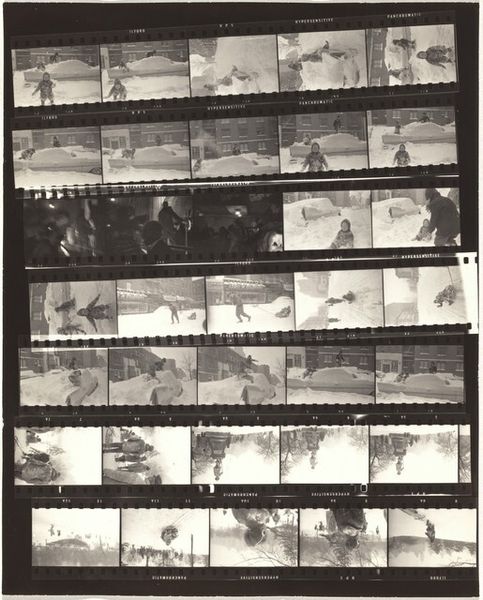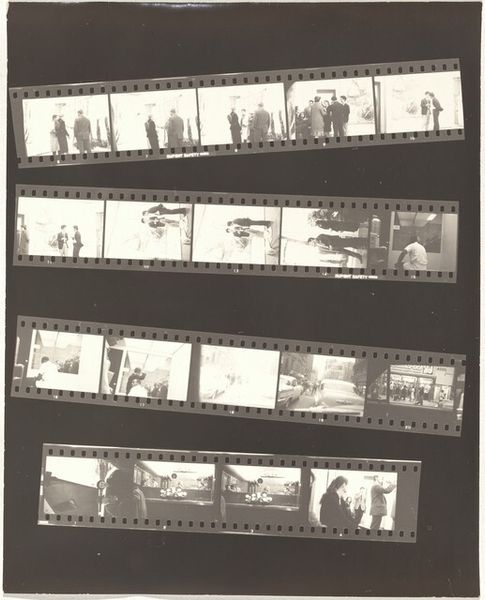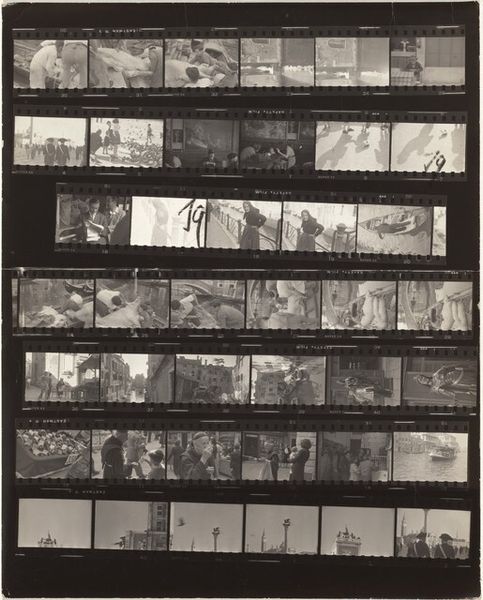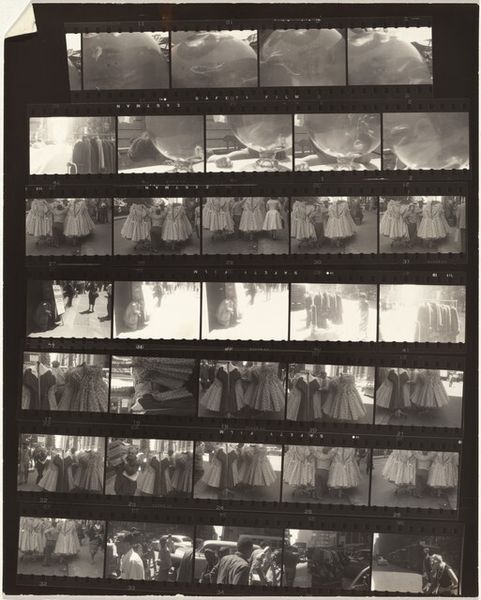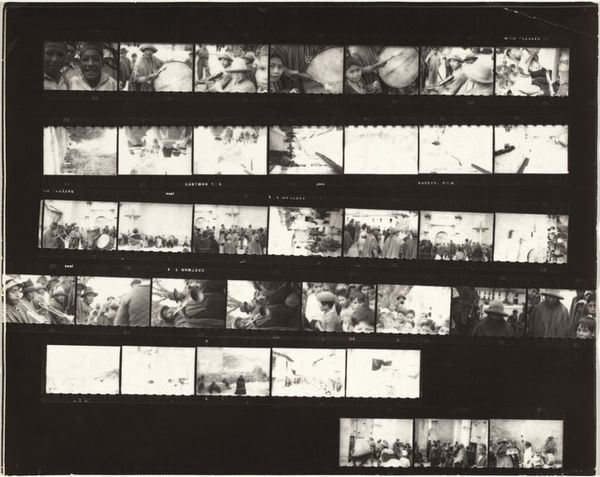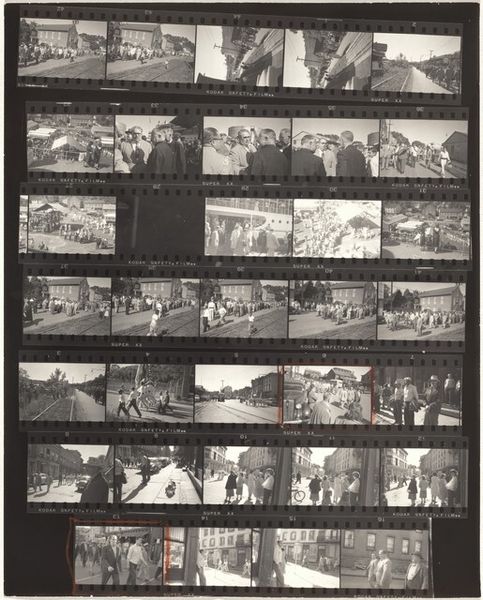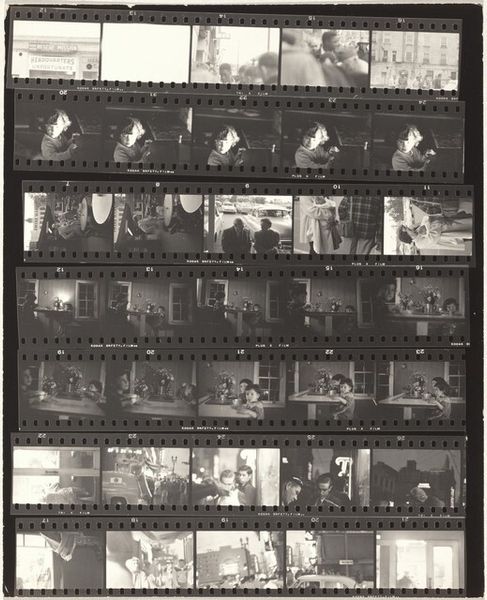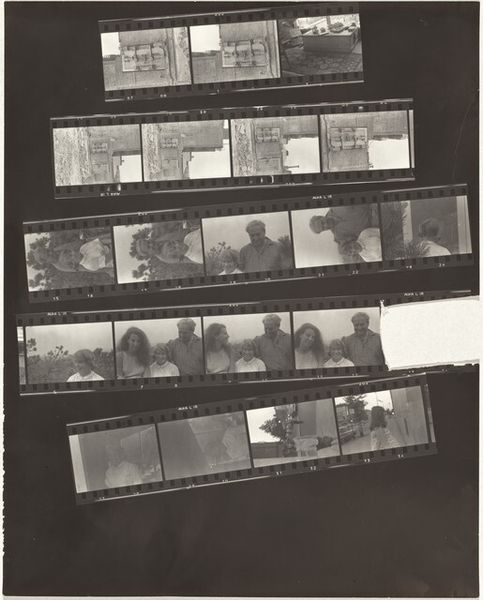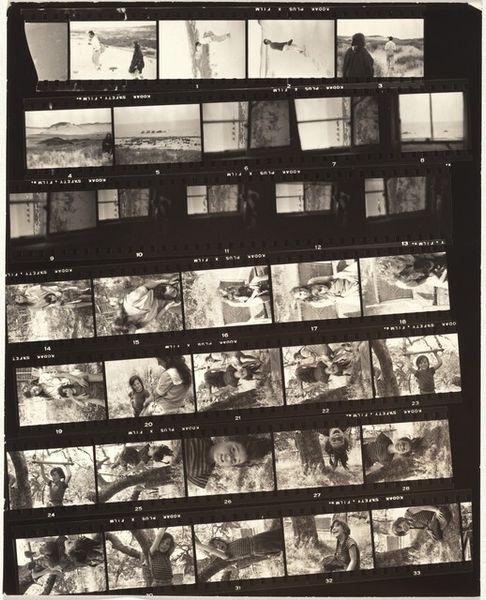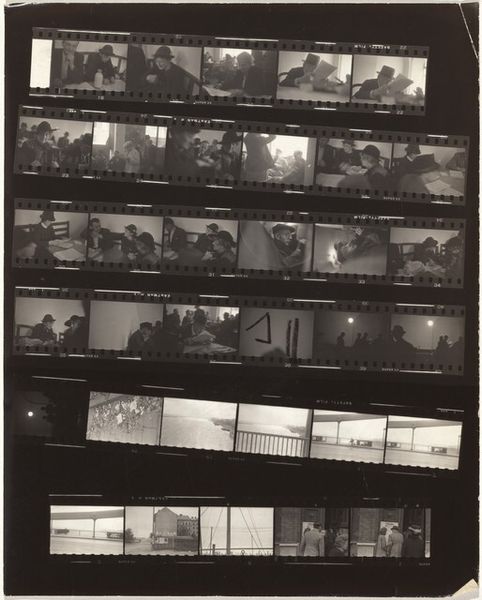
Dimensions: overall: 29.8 x 23.8 cm (11 3/4 x 9 3/8 in.)
Copyright: National Gallery of Art: CC0 1.0
Editor: This is Robert Frank's "Paris 16A", a gelatin-silver print made between 1949 and 1950. It's a contact sheet, raw and immediate. I'm struck by the contrast between the candid, almost careless documentation and the sense of a fleeting, almost secretive, moment. What do you see here? Curator: I see a deliberate act of photographic storytelling rooted in the politics of looking. Frank's contact sheet unveils the photographer’s selection process and decision-making; it disrupts the romanticized ideal of the singular, perfect image. What do you notice about the subjects depicted? How does their presence - or absence - contribute to the overall narrative? Editor: I see mostly men, some seated, some standing. There’s a definite sense of them all focused on something outside the frame. And some images have these chairs without people, so it’s all very unsettling. Curator: Exactly. The figures in the frame embody post-war anxieties and social stratification. Men occupy positions of power. How can we examine the visual dynamics and gendered assumptions in Frank's composition? Is it just a moment captured, or is there a deeper conversation about societal structures? Editor: It does make me think about who has the power to be seen and unseen, to occupy public space… Even down to something as simple as a chair! Curator: Indeed. This contact sheet urges us to confront the power dynamics embedded within seemingly casual street photography. What does this make you consider about contemporary image culture? Editor: I think it forces me to consider who holds the camera, and who decides what we see - and what we don't. This single sheet unravels layers of social commentary, and visual accountability. Curator: I agree. It's a profound examination of visibility and power.
Comments
No comments
Be the first to comment and join the conversation on the ultimate creative platform.

